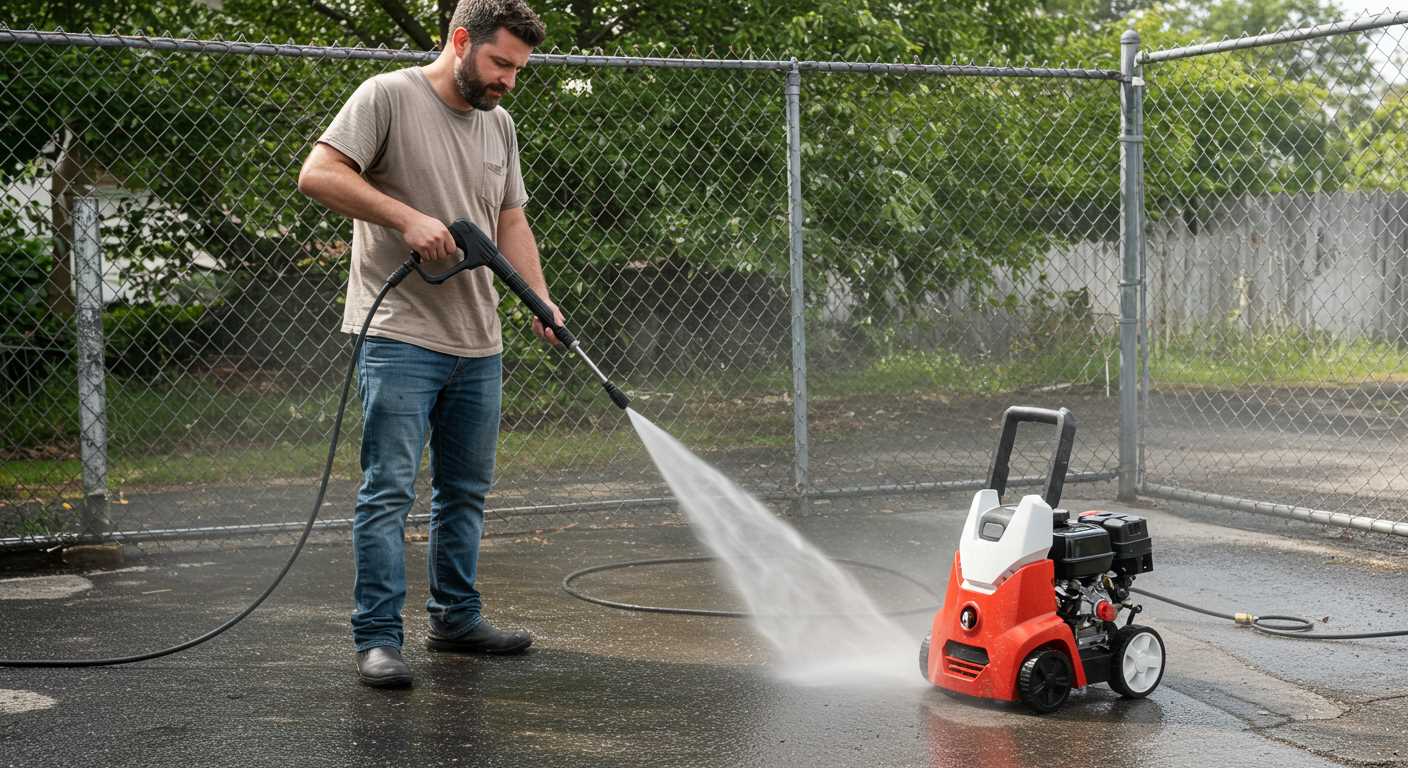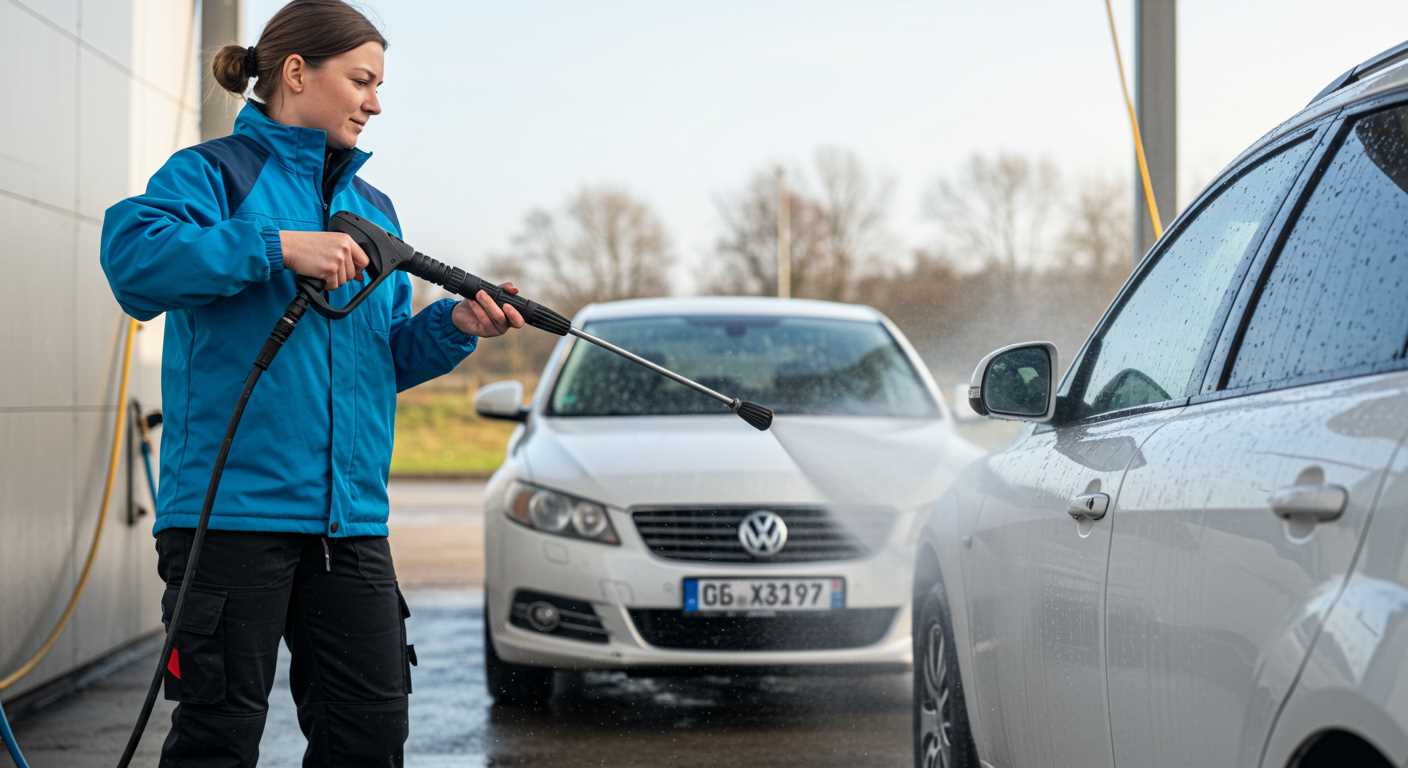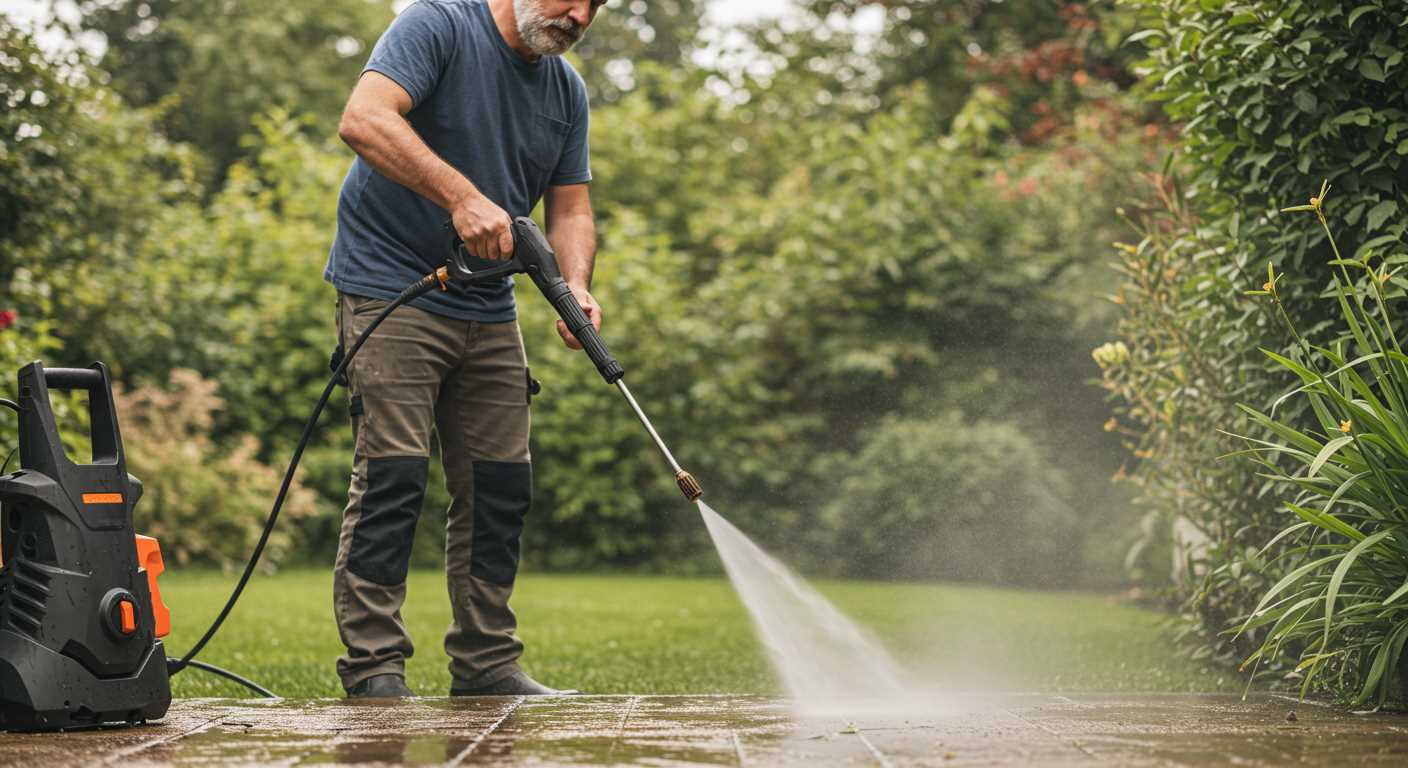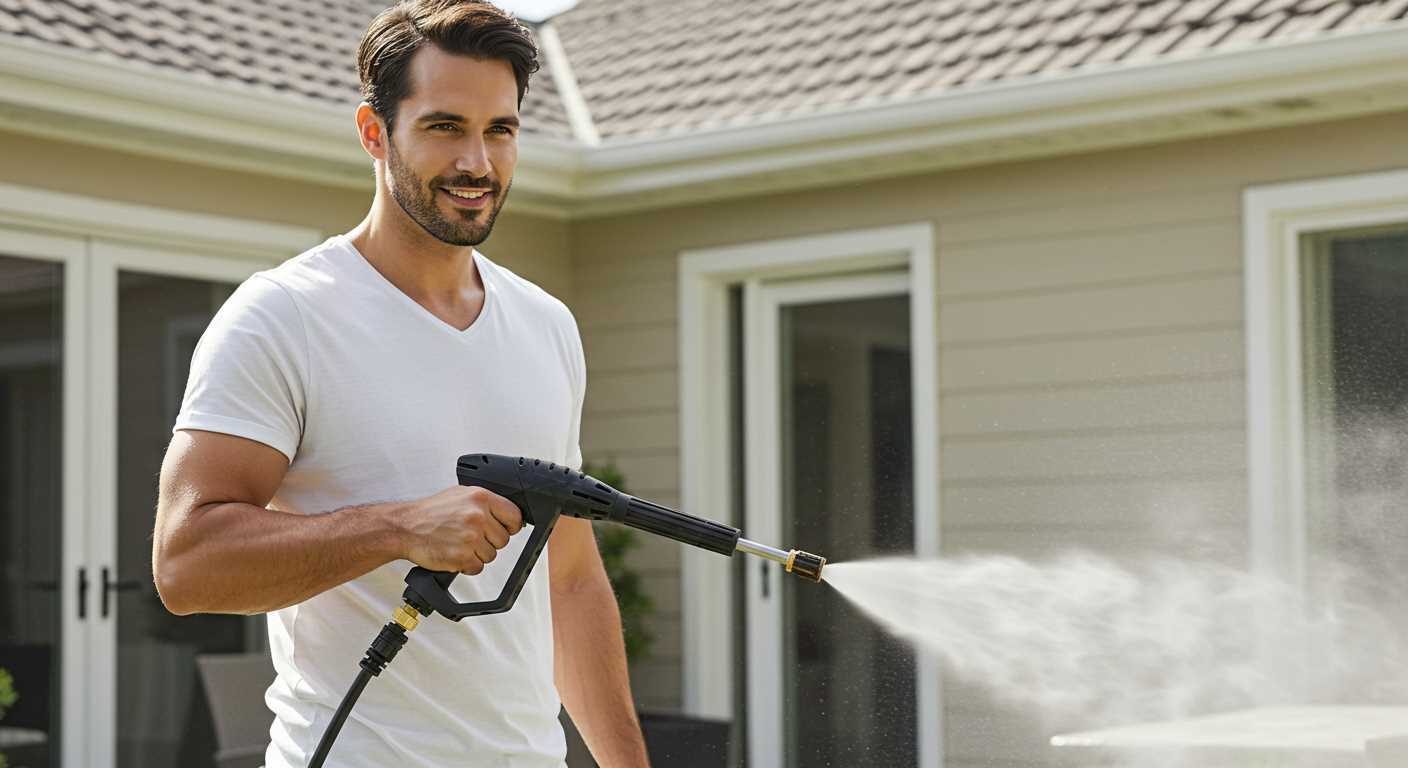



Firstly, selecting the appropriate cleaning device involves understanding the right nozzle types. Different tasks, such as washing vehicles or removing stubborn grime, require distinct nozzles for optimal performance. A variable nozzle, for instance, provides versatility for various applications.
Next, ensuring access to a reliable water source is imperative. Having a steady supply of water, whether from a garden hose or a tap, guarantees continuous operation without interruptions. It’s wise to check for adequate pressure and flow rate to maximise efficiency.
Additionally, protective gear, including gloves and safety goggles, cannot be overlooked. Safety must always come first to prevent injuries during operation. Moreover, a sturdy surface for placement enhances stability and reduces the chances of accidents.
Lastly, familiarisation with the device’s manual proves beneficial. Understanding each component and functionality aids in achieving the best results while also prolonging the longevity of the equipment. This knowledge minimises the risk of damage, ensuring a rewarding experience.
Understanding Different Types of Pressure Washers
Choosing the right cleaning device depends on specific tasks. Electric models excel in light to medium-duty jobs, ideal for maintaining decks, patios, and vehicles. They typically produce between 1300 to 2000 PSI, making them suitable for regular home use.
Gas-Operated Units
Gas-powered equipment delivers higher pressure, ranging from 2000 to 4000 PSI, and suits demanding tasks such as cleaning driveways or sidings. These units usually require more maintenance but provide the advantage of portability, as they don’t depend on electrical outlets. A robust engine design enhances durability for prolonged use, especially industrial applications.
Cold vs. Hot Water Systems

Cold water machines efficiently handle dirt and grime using unheated water. In contrast, hot water variants heat the water, which significantly improves cleaning efficiency, especially for oily or greasy contaminants. These systems are often found in commercial settings due to their effectiveness in tough cleaning scenarios.
Required Safety Gear for Operating a Pressure Washer
Investing in protective footwear is non-negotiable. Sturdy, slip-resistant boots guard against falling debris and water hazards, providing necessary foot support and grip on slippery surfaces.
Eye Protection

Goggles or a full-face shield must be worn to prevent injury from flying debris and high-pressure water spray. Choose impact-resistant lenses to ensure maximum protection during operation.
Protective Clothing
Wearing long sleeves and durable trousers shields skin from potential injuries caused by splashes. Opt for clothing made from thick fabrics that resist tearing. Avoid loose-fitting garments that could become entangled in equipment.
Gloves designed for high-pressure tasks are another critical part of safety attire. Look for gloves that provide both dexterity and protection against water and chemicals, ensuring a secure grip on the equipment.
Lastly, a quality respirator may be necessary if working in areas with poor air quality or when using cleaning agents that produce harmful vapours. This gear safeguards lungs from contaminants, ensuring safe operation throughout any cleaning project.
Choosing the Right Cleaning Solution for Your Tasks
For optimal results, selecting the appropriate cleaning solution tailored to specific surfaces and grime types is key. For concrete, a heavily formulated alkaline cleaner is best, as it cuts through grease and oil efficiently. When tackling wooden surfaces, utilise a gentle soap designed to protect the wood grain and finish while removing dirt.
For vehicles, a pH-neutral detergent is essential. It will lift dirt without damaging the paint or any protective coatings. Consider using a foaming agent for a thicker application, which allows better adherence to surfaces, promoting thorough cleaning.
If mould or mildew is present, a solution containing bleach can effectively eliminate these stubborn stains. However, it’s crucial to follow manufacturer guidelines and safety protocols, as chemicals can be harmful when misused. Always rinse the area thoroughly to prevent residue buildup.
When selecting a cleaner, check for compatibility with the machine’s specifications. Not all detergents suit every model; some require specific types to avoid potential damage. In addition, ensure the solution is environmentally friendly, if necessary, to minimise impact on surrounding flora and fauna.
Emphasising concentrated formulas can provide better coverage and reduce packaging waste. Diluting them as directed on labels will yield effective results without overwhelming surfaces with product.
Lastly, have a variety of solutions on hand. Versatility is beneficial, as different tasks may arise that require distinct cleaning approaches. Being prepared will streamline the process and enhance overall effectiveness.
Preparing the Area Before Pressure Washing
Clear the location of all loose items. Move furniture, cars, and potted plants to prevent damage during the cleaning process. If there are delicate decorations or fragile objects, either remove them or cover them securely.
Check for potential hazards like overhead electrical lines, loose bricks, or uneven surfaces. Secure any unstable outdoor features to prevent accidents. Ensure adequate drainage of water; check that the area slopes away from buildings to avoid flooding.
Identify the surfaces to be cleaned. For safety, patch any cracks or holes before starting, as high-pressure water can worsen existing damage. Perform a quick spot test on a hidden area to determine the surface’s reaction to the cleaning solution.
Consider protecting nearby vegetation. Cover shrubs and flowers with a tarp or plastic sheeting to shield them from harsh chemicals or lifted debris.
Enlist assistance if the area is large or requires heavy lifting. Having an extra set of hands can increase efficiency and enhance safety throughout the task.
Finally, ensure that electrical cords and hoses are placed safely away from the cleaning area to prevent tripping hazards. Organise your cleaning supplies, making them easily accessible during the operation.
Maintenance Tasks for Your Pressure Washer

Regularly check and replace the oil in gas-powered machines. This task should be done after every 50 hours of operation or at least once a season. Ensure the oil level is consistent with manufacturer recommendations.
Inspect and clean the air filter periodically. A clean filter promotes optimal airflow and performance. Depending on usage, this may need attention every few months.
Unclog the spray nozzle after each session. Debris can accumulate, obstructing the nozzle and reducing efficiency. Use a wire or pin to clear any blockages gently.
Descale the water inlet filter regularly. Sediment buildup can hinder water flow. Remove the filter, rinse it under running water, and reinstall it to maintain a proper water supply.
Examine the hoses for any signs of wear or damage. Cracks or leaks can lead to reduced pressure and efficiency. Replace any hoses showing signs of deterioration promptly.
Ensure the power cord, if electric, is free from frays and cuts. This will prevent electrical hazards. Store the cord properly to avoid kinks or damage.
Test and replace seals or O-rings as necessary to prevent leaks. Small leaks can lead to significant performance issues over time.
Store the equipment in a dry, protected environment to prolong its lifespan. This can prevent rust formation on components and keep the machinery in peak condition.
Hard water can cause mineral deposits in the pump. Use a descaler solution every few months if hard water is an issue. Follow the instructions provided by the manufacturer for proper application.
Finally, consult the user manual periodically for specific recommendations related to maintenance. Each model may have its own unique requirements to ensure longevity and optimal performance.
Troubleshooting Common Pressure Washer Issues

Inconsistent water pressure usually indicates a blockage in the nozzle or hose. Inspect these components thoroughly and clear any debris or kinks that might be present.
If there’s an unusual noise during operation, it may suggest a problem with the motor or pump. Checking for loose parts, ensuring proper lubrication of moving elements, and examining the intake for clogs can often resolve this issue.
Loss of power can stem from electrical supply problems. Verify that the extension cord is rated for the equipment and free from damage. Ensure that the circuit supplying power is functioning properly, with no blown fuses or tripped breakers.
Difficulty starting could indicate fuel issues or a dead battery in electric units. If it’s a petrol model, confirm that there’s enough fuel and that it’s fresh. For electric variants, check that the power source is stable and connections are secure.
If the detergent isn’t being mixed properly, inspect the siphon tube for blockages or kinks. Cleaning the inlet and ensuring the detergent is properly diluted can rectify this problem.
Water leaking from the machine often points to worn seals or loose connections. Tightening fittings and replacing obsolete O-rings can usually stop leaks from the unit.
For temperature issues, verify that the thermal relief valve is functioning correctly and isn’t stuck, as this component prevents overheating during extended use.
Addressing these issues quickly enhances operational performance and prolongs the lifespan of the machine, ensuring effective cleaning tasks every time.
FAQ:
What tools do I need to operate a pressure washer?
To operate a pressure washer effectively, you will need a few important tools and accessories. First, make sure you have a reliable pressure washer, which usually comes with a variety of attachments. It’s beneficial to have a selection of nozzles that adjust spray patterns, as different surfaces require different pressure levels. Additionally, you might need a garden hose, as this is essential for supplying water to the machine. Cleaning detergents specifically designed for pressure washers can enhance cleaning performance, especially for tougher stains. Lastly, wearing safety gear such as goggles and gloves is advised, as high-pressure water can pose risks.
How do I prepare my area before using a pressure washer?
Preparing your area before using a pressure washer is crucial for both safety and effectiveness. Begin by clearing the area of any debris, furniture or obstacles that may get in the way. This ensures you can clean continuously without interruptions. Next, cover any plants or delicate items with tarps or plastic sheeting to protect them from overspray and potential damage from cleaning agents. Make sure to check that all windows and doors are closed, and ensure that the pressure washer’s power source is safe and accessible. Lastly, lay out any hoses or additional equipment you’ll be using, so everything is organised and ready for your cleaning task.









